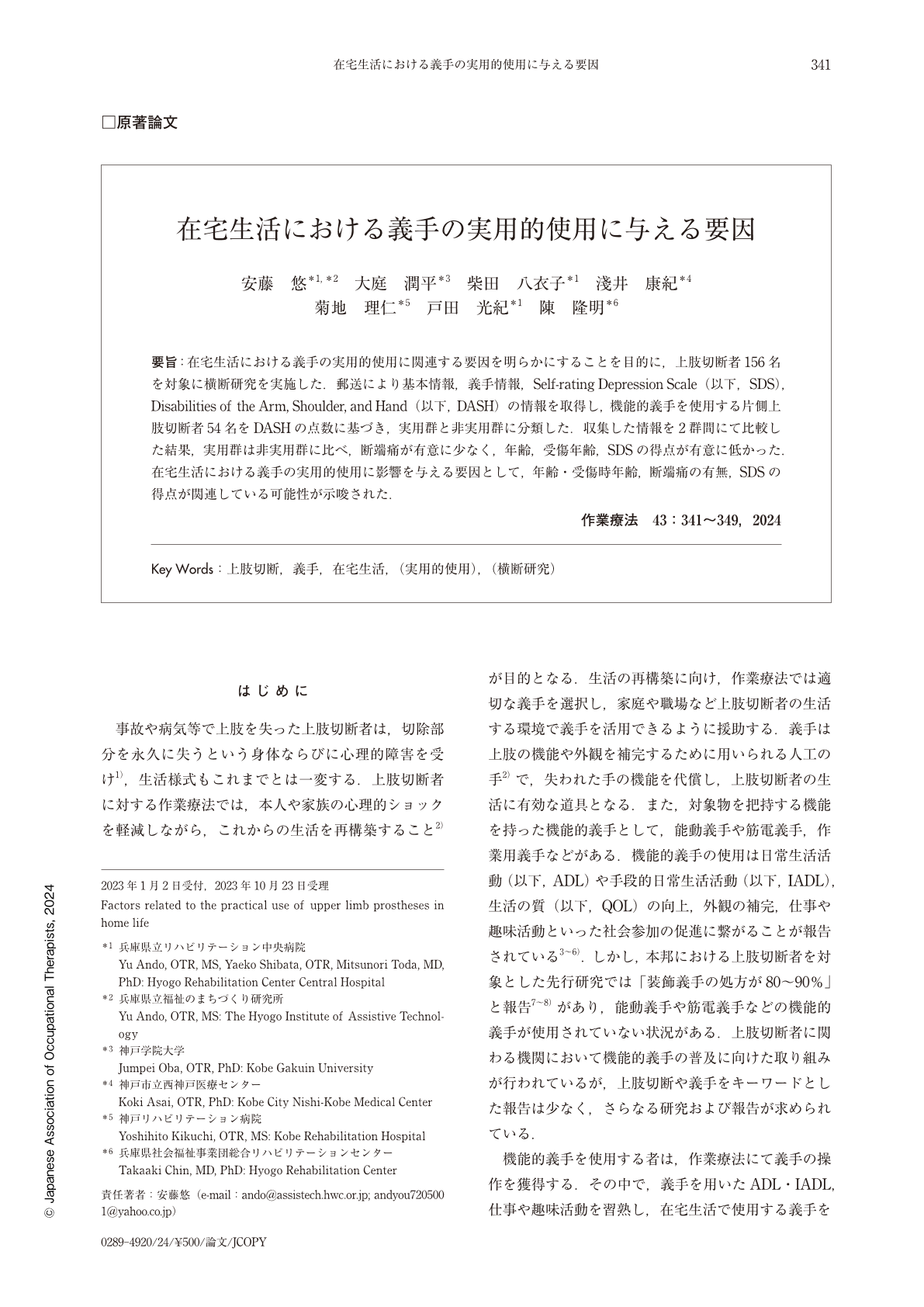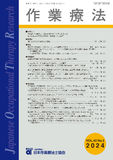Japanese
English
- 販売していません
- Abstract 文献概要
- 1ページ目 Look Inside
- 参考文献 Reference
要旨:在宅生活における義手の実用的使用に関連する要因を明らかにすることを目的に,上肢切断者156名を対象に横断研究を実施した.郵送により基本情報,義手情報,Self-rating Depression Scale(以下,SDS),Disabilities of the Arm, Shoulder, and Hand(以下,DASH)の情報を取得し,機能的義手を使用する片側上肢切断者54名をDASHの点数に基づき,実用群と非実用群に分類した.収集した情報を2群間にて比較した結果,実用群は非実用群に比べ,断端痛が有意に少なく,年齢,受傷年齢,SDSの得点が有意に低かった.在宅生活における義手の実用的使用に影響を与える要因として,年齢・受傷時年齢,断端痛の有無,SDSの得点が関連している可能性が示唆された.
The purpose of this study was to clarify the factors related to the practical use of functional prosthesis in home life through a cross-sectional study of 156 upper limb amputees. We analyzed 54 patients with one-sided upper limb amputations who were using functional prosthesis, and obtained data based on basic factors, prosthesis information, the Self-rating Depression Scale (SDS), and the Disabilities of the Arm, Shoulder and Hand (DASH), Based on the DASH score, we classified the functional prosthesis into the practical group and the non-practical group and compared them. As a result, stump pain was significantly less in the practical group than in the non-practical group. Age, injury age, and depressive state were significantly lower in the practical group than in the non-practical group, suggesting that age, injured age, presence or absence of stump pain, and depressive state may be related to the practical use of functional prosthesis in home life.

Copyright © 2024, Japanese Association of Occupational Therapists. All rights reserved.


